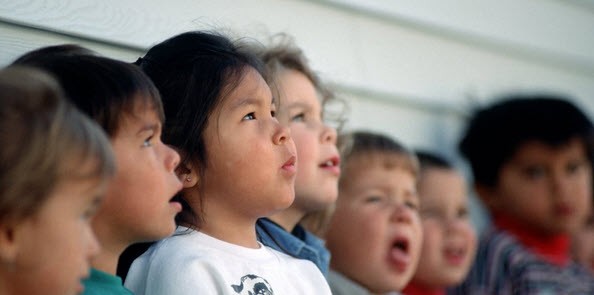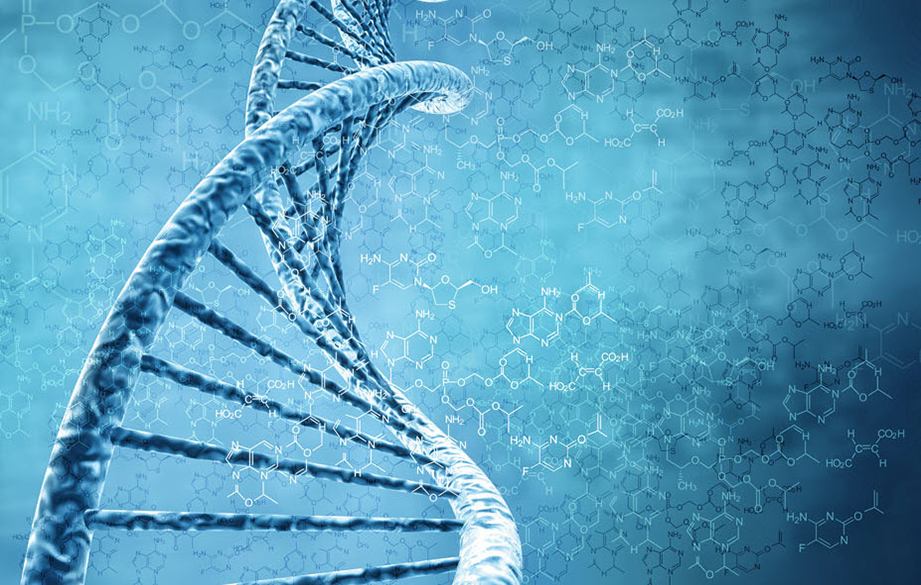
Kids Brain Health Network is a national network of researchers and health professionals dedicated to helping children with neurodisabilities and their families. They fund collaborative research, train the next generation of developmental neuroscientists, and mobilize the knowledge they generate. They work in partnership with Indigenous and First Nations communities to fund culturally informed and appropriate research, including the following research projects currently funded by KBHN.
Nurturing the Seed: Supporting the Healthy Development of Indigenous Children
New Physical Activity Coaching: On the Move in Indigenous Communities
Social Genomic Assessment Tool: Identifying Infants and Children At-Risk for FASD
Nurturing the Seed: Supporting the Healthy Development of Indigenous Children
Cycle II Funding
Challenge
Compared to their non-Indigenous counterparts, Indigenous children in Canada have an increased risk of developmental delays and poor mental health. This inequity is due to intergenerational trauma, marginalization and a lack of culturally-informed interventions.
Solution
Together with Elders and advisors from several Indigenous communities, researchers created a screening and intervention program called Nurturing the Seed. It starts with a validated questionnaire to identify infants and toddlers who are at risk of facing challenges. Then, with a training, a frontline worker (e.g. an early-childhood educator, social worker or Elder) suggests ways for the child’s parents or caregivers to help strengthen the skills of concern through interactions and activities. For example, if a family enjoys group drumming, this could be used to help their child practise turn-taking. If another child makes sounds but not yet words, reliably responding to their babbling could help them to develop their language abilities.
Project Summary
Nurturing the Seed provides a way to identify developmental risks in early childhood and act on them right away since the first five years of a child’s life are critical to their brain development and long-term outcomes. It focuses on five key areas: communication, problem-solving, fine and gross motor skills and personal-social skills. It’s a culturally informed intervention that incorporates worldviews, values, rituals and parenting practices distinct to Indigenous communities in Canada.
Impacts
Exchanging knowledge: Nurturing the Seed serves as a useful bridge between science and Indigenous traditions and perspectives on raising children.
Improving long-term outcomes: This project increases the likelihood that children succeed academically and engage in the community. It also lowers their risk of mental illness and chronic physical conditions.
Expanding access to support: Nurturing the Seed doesn’t require a formal diagnosis or highly-trained specialists, making it readily portable into remote regions.
Collecting essential data and influencing policy: Canada knows little about the development of Indigenous children. Nurturing the Seed is collecting new information that will inform future initiatives.
Principal Investigators
Dr. James Reynolds, Queen’s University
Dr. Chaya Kulkarni, Hospital for Sick Children, Toronto
Partners
District of Temiskaming Elders Council
Temiskaming Native Women’s Support Group
Orillia Native Women’s Group
Georgian Bay Native Women’s Association
Kids First La Ronge
Aamjiwnaang First Nation
Native Child and Family Services
Mikmaq Family Support Miramichi
Cycle III Funding
Challenge
There is a lack of culturally informed developmental screening tools and interventions to serve the specific needs of at-risk Indigenous populations.
Solution
Nurturing the Seed: A Developmental Support Planning Model for Working with Indigenous Infants, Children, and Families, is a project specifically designed to support the work of frontline practitioners in supporting the developmental needs of young at-risk Indigenous children.
Project Summary
The intervention is a culturally adapted version of the Hand in Hand: Growing Together Everyday model of developmental support, a project previously developed with the backing from KBHN. The intervention includes two parts: a screening tool and a support plan. First, children between the ages of 0 and 5 are screened using a validated set of screening tools for any developmental risk. Based on this screening, a support plan is created, which is shared with every caregiver involved in the child’s life. Nurturing the Seed follows the same format but incorporates worldviews, rituals and parenting practices distinct to Indigenous communities.
Looking Towards the Future
Nurturing the Seed is intended explicitly for at-risk Indigenous populations. The program was adapted in consultation with First Nations communities across Canada, and it is currently being evaluated. It will be tested in Ontario (Timiskaming, Simcoe, Sarnia, Toronto), Saskatchewan (La Ronge) and New Brunswick (Miramichi), Toronto and Sarnia. The goal is to have the program reach at least 200 children/families each year. This process involves improving the sensitivity, aptitude and skill set of frontline service agencies who work with Indigenous communities. The project team envisions adding 3-5 new communities to the program each year over the next three years.
Principal Investigators
Dr. Chaya Kulkarni, SickKids
Dr. James Reynolds, Queen’s University
Partners
District of Temiskaming Elders Council
Temiskaming Native Women’s Support Group
Orillia Native Women’s Group
Georgian Bay Native Women’s Association
Kids First La Ronge
Aamjiwnaang First Nation
Native Child and Family Services
Mikmaq Family Support Miramichi
Infant Mental Health Program
Ontario Centre of Excellence for Child and Youth Mental Health
Indigenous communities Canada
New Physical Activity Coaching: On the Move in Indigenous Communities
Challenge
Participating in community-based sports and recreation brings a slew of benefits to kids, including the development of healthy lifestyle habits, self-esteem, self-control, physical abilities and social skills. However, children living with neurodevelopmental disabilities (NDDs) often face barriers to engaging in these activities and getting the most out of them.
Solution
Kids Brain Health Network researchers studied physical-activity programs for kids with NDDs at over 50 sites to see exactly how they benefitted participants and their families. They also identified issues and gaps that can impede this impact. Based on their learnings, they developed and tested an approach called New Physical Activity Coaching (New-PAC). This program is now used in dozens of cities by organizations that include Special Olympics BC. In pursuit of equity and to promote inclusive and positive physical-activity environments for Indigenous children with NDDs, KBHN is partnering with the Indigenous Sport, Physical Activity & Recreation Council and community stakeholders to adapt and implement New-PAC in rural and Indigenous contexts.
Project Summary
One of the critical components of the New Physical Activity Coaching Program (New-PAC) is need-based, child-centred, goal-oriented coaching. This component entails understanding each child’s specific abilities, adapting activities as needed and highlighting progress. For instance, a child might show a measurable improvement in their balancing ability: an achievement worth underlining. To help optimize outcomes, coaches engage families. They provide parents with a personalized list of activities they could practice with their child at home, along with access to website with instructional videos. Finally, New-PAC builds a supportive social network for parents by facilitating opportunities to chat through the online platforms and meet up with each other in person.
Impacts
Removing barriers to participation: The New-PAC approach helps to make physical recreation into an accessible, enjoyable and beneficial experience for children living with NDDs.
Improving kids’ health, abilities and well-being: Physical Activity programs bring positive changes in kids’ motor and social skills, self-perception, mental health, quality of life and daily functioning.
Supporting families’ resilience: Parents of kids with NDDs benefit from the social networks that form around physical-activity programs. They’ve reported more social support, less stress and healthier family lifestyles.
Engaging communities and ensuring sustainability: Continual improvement of New-PAC and its suitability for diverse communities is expected to come out of this approach.
Sharing insights: An online “community of practice” forum helps parents and coaches from different places learn from each other. By examining factors and that helped or hindered New-PAC implementation across sites, researchers can outline steps and strategies that could help other Indigenous and rural communities to use New-PAC.
Principal Investigators
Dr. Jean-Paul Collet, MD, Ph.D., Professor, Pediatrics Department, University of British Columbia
Dr. William McKellin, Ph.D. Professor, Anthropology Department, University of British Columbia
Dr. Lise Olsen, PhD, RN, Faculty of Health and Social Development, University of British Columbia – Okanagan campus
Dr. Stephanie Glegg, BscOT, PhD , Sunny Hill Health Centre for Children, University of British Columbia
Dr. Mojgan Gitimoghaddam, MD, PhD (c), Department of Pediatrics, University of British Columbia
Partners
Indigenous Sport, Physical Activity & Recreation Council (ISPARC)
Victoria Native Friendship Centre (VNFC)
BC Association for Child Development and Intervention (BCACDI)
Special Olympics Canada
Special Olympics BC
ParticipACTION
Douglas College
Sunny Hill Health Centre for Children
Social Genomic Assessment Tool: Identifying Infants and Children At-Risk for FASD
Challenge
Evidence shows that early interventions for FASD are beneficial in the long-term. The challenge is that FASD assessments are costly, and most children are not assessed until they are school-aged. An added challenge is that diagnosis often hinges on confirmation of prenatal alcohol exposure, which can be challenging to attain.
Solution
Drs. Geoff Hicks and Brenda Elias at the University of Manitoba are working with partners throughout the Province of Manitoba to develop an FASD genomics assessment tool. This tool would allow for the early identification of children who are at risk of this health condition. The team is working closely with Indigenous partners to develop this tool for all at-risk children.
Project Summary
The tool is based on epigenetics—changes that happen to a gene as the result of environmental influences, such as prenatal exposure to alcohol (PAE). The test itself would be a cheek swab, which would identify epigenetic signatures unique to people with FASD and PAE. The idea is that this would be a quick, cost-effective way to identify children at risk of FASD, including situations where confirmation of prenatal alcohol exposure is not disclosed or unattainable.
Impacts
Tool validation: In the first stage of the project, an epigenetic signature specific to individuals with FASD was identified. This signature is now being validated to ensure its sensitivity and specificity. To do this, the team collected 150 samples from a tribal area in Manitoba to expand and recruit up to 2,000 individuals.
Expansion beyond genomics: Developing this tool falls under a KBHN supported project called Translating to the Community (T2C), a social biobank for FASD and the first of its kind in Canada. The team is collecting a broad scope of information on children and their families about the social determinants of health to gain a more wholesome picture of FASD and its associated risk factors. To officially launch the T2C component of the project, an Indigenous Elders blessing ceremony was held at the University of Manitoba. Since launching, community members, their Elders and health care professionals have been involved in meetings and workshops aimed at finding the most appropriate ways to engage and enhance community involvement and to rethink existing pathways to FASD prevention, diagnosis and interventions.
Promoting long-term relationships: Indigenous communities in Manitoba are full partners in this endeavour. They are engaged in governance, study design, data collection, validating findings, promoting early diagnosis, framing practical prevention and intervention approaches, and reducing stigma. These are all critical considerations when it comes to FASD. The team is working to create long-lasting relationships between Indigenous communities and other FASD groups in Manitoba and throughout Canada to sustain this engagement. For example, the Cree Nation Tribal Health Centre, the First Nation communities associated with the Centre, and the families from those communities, have been directly linked to the Manitoba FASD Clinic as a result of this project.
End goal
The ultimate goal of this project is to create a cost-effective tool to identify infants and children at risk of FASD, with a particular emphasis on Indigenous approaches. After development, implementation of the tool will build on the existing partnership and extend to other Indigenous communities and the broader population.
Principal Investigators
Dr. Geoff Hicks, University of Manitoba
Dr. Brenda Elias, University of Manitoba
Dr. Paul Pavlidis, University of British Columba
Partners
Cree Nation Tribal Health Centre
Manitoba FASD Clinic
Manitoba Liquor and Lotteries




